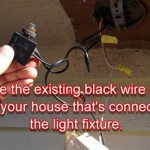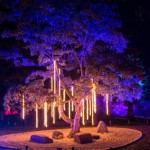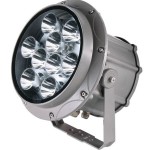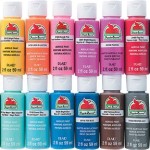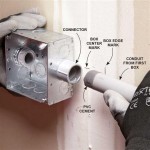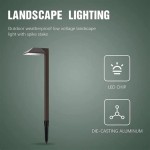Outdoor Propane Gas Lights: Illuminating Your Outdoor Spaces
Outdoor propane gas lights provide a distinctive and reliable source of illumination for residential and commercial properties. They offer a blend of functionality, aesthetics, and energy efficiency, making them a viable alternative to traditional electric lighting, particularly in areas where electricity access is limited or unreliable. The operational principles, installation considerations, safety precautions, and maintenance procedures associated with these lights warrant careful examination to ensure optimal performance and user safety.
Propane gas lights operate by utilizing the combustion of propane to produce light. Propane, a readily available and transportable fuel, is supplied to the light fixture via a gas line. A control valve regulates the flow of propane to a burner, where it mixes with air. This mixture is then ignited, producing a flame that heats a mantle. The mantle, typically constructed from a ceramic or fabric mesh impregnated with rare earth elements, incandesces when heated, emitting a bright, white light. The intensity of the light is typically adjustable by altering the propane flow rate, providing users with control over the illumination level.
Unlike electric lights, which rely on a consistent power grid, propane gas lights function independently, making them suitable for remote locations, camping sites, or as a backup lighting solution during power outages. The warm and inviting glow emitted by propane lights often creates a more aesthetically pleasing ambiance compared to the harshness of some electric lighting options. This characteristic makes them popular for residential patios, outdoor dining areas, and landscape lighting.
Installation Considerations for Outdoor Propane Gas Lights
Proper installation is crucial for the safe and efficient operation of outdoor propane gas lights. A qualified gas technician should perform the installation process to ensure adherence to local building codes and safety regulations. The selection of an appropriate location for the light fixture is a primary concern. The location should be well-ventilated to prevent the accumulation of combustion byproducts. It should also be positioned away from flammable materials, such as dry vegetation or overhangs, to minimize the risk of fire.
The gas line supplying propane to the light fixture must be properly sized and installed. Copper or polyethylene tubing are commonly used for gas lines, with specific requirements varying depending on the length of the run and the pressure of the propane supply. The gas line should be buried underground to protect it from physical damage and weather exposure. The depth of burial is typically governed by local building codes.
Leak testing is a critical step following the connection of the gas line to the light fixture. A soap-and-water solution can be applied to all fittings and connections. The appearance of bubbles indicates a gas leak, which must be promptly addressed by tightening the connection or replacing the faulty component. A pressure test, performed using a manometer, can also be conducted to verify the integrity of the gas line.
The light fixture itself must be securely mounted to a stable surface. This may involve attaching it to a post, wall, or ceiling. The mounting hardware should be appropriate for the weight of the fixture and the type of surface to which it is being attached. Leveling the fixture is essential to ensure even combustion and optimal light distribution.
Finally, the installation should include a shut-off valve located upstream of the light fixture. This valve allows for easy isolation of the gas supply during maintenance or in the event of an emergency. The location of the shut-off valve should be clearly marked and easily accessible.
Safety Precautions When Using Propane Gas Lights
Safety is paramount when operating propane gas lights. Users should be aware of the potential hazards associated with the use of propane and take appropriate precautions to mitigate these risks. Carbon monoxide (CO) poisoning is a serious concern with any combustion appliance, including propane gas lights. Carbon monoxide is a colorless, odorless gas that can be lethal if inhaled in sufficient concentrations. Proper ventilation is essential to prevent the accumulation of CO. Never operate propane gas lights in enclosed or poorly ventilated spaces.
Regularly inspect the light fixture and gas line for any signs of damage or wear. Look for cracks, leaks, or corrosion. Replace any damaged components immediately. Do not attempt to repair gas lines or fixtures yourself unless you are a qualified gas technician. Tampering with gas lines can be extremely dangerous.
Always follow the manufacturer's instructions for operating and maintaining the light fixture. This includes using the correct type of propane and replacing mantles as needed. Do not over-tighten or force any components. Use appropriate tools for the job.
Keep flammable materials away from the light fixture. This includes curtains, paper, and other combustible items. Maintain a safe distance between the light fixture and any objects that could potentially ignite.
Never leave propane gas lights unattended. Turn off the gas supply when the lights are not in use. This will prevent accidental leaks and reduce the risk of fire. Be particularly cautious when operating propane gas lights around children or pets. Ensure that they are supervised and kept at a safe distance from the fixture.
If you smell gas, immediately turn off the gas supply and evacuate the area. Do not use any electrical devices, such as lights or telephones, as this could create a spark and ignite the gas. Contact a qualified gas technician to inspect the system and repair any leaks before resuming use.
Maintenance and Troubleshooting of Propane Gas Lights
Regular maintenance is essential for ensuring the longevity and optimal performance of outdoor propane gas lights. The frequency of maintenance will depend on the usage and environmental conditions, but a general inspection should be performed at least annually. Start by cleaning the light fixture to remove any dirt, dust, or debris. Use a soft cloth and mild detergent. Avoid using abrasive cleaners or solvents, as these can damage the finish.
Inspect the mantle for any signs of damage or wear. Replace the mantle if it is torn, cracked, or discolored. When replacing the mantle, handle it carefully to avoid damaging it. Follow the manufacturer's instructions for installing the new mantle.
Check the burner for any blockages or obstructions. Use a small brush or wire to clear any debris from the burner ports. Ensure that the burner is properly aligned and securely attached to the light fixture.
Inspect the gas line for any leaks or damage. Use a soap-and-water solution to check for leaks at all fittings and connections. Repair any leaks immediately. Replace any damaged sections of the gas line. Check the gas regulator for proper operation. The regulator should maintain a consistent pressure of propane to the light fixture. If the regulator is malfunctioning, it should be replaced by a qualified gas technician.
If the light fixture is not functioning properly, troubleshoot the problem systematically. Start by checking the gas supply. Ensure that the propane tank is full and that the shut-off valve is open. Check the igniter to ensure that it is producing a spark. If the igniter is not working, replace it with a new one. If the flame is weak or flickering, clean the burner and check the gas pressure. Adjust the propane flow rate to optimize the flame intensity. If the light fixture is producing excessive soot or smoke, the air-to-fuel ratio may be incorrect. Adjust the air shutter to improve the combustion efficiency.
For more complex problems, consult a qualified gas technician. Do not attempt to repair any components that you are not familiar with. Improper repairs can be dangerous and may void the warranty on the light fixture.
By adhering to these installation guidelines, safety precautions, and maintenance procedures, users can effectively utilize outdoor propane gas lights to enhance the ambiance and functionality of their outdoor spaces while ensuring a safe and reliable lighting solution.

Light Up Your Home With Propane Outdoor Lighting Missouri

Pt302 6c Fin Style Portable Patio Light Flame Engineering

Outdoor Gas Lamps Lanterns And Electric Lights Aglw

Gas Lighting Elkin Advance Boone Millers Creek Mills River Pilot Mountain Sparta Statesville Weaverville

Pt302 6c Fin Style Portable Patio Light Flame Engineering

Outdoor Gas Lamps Lanterns And Electric Lights Aglw

Illuminate Your Outdoor Space With Propane Suburban

Gas Lamps And Lanterns

Troubleshooting Your Gas Lights American Lamp Works

Tempest Torch Gas Head With In Ground Mount Assembly Outdoor Post Lights Torches

